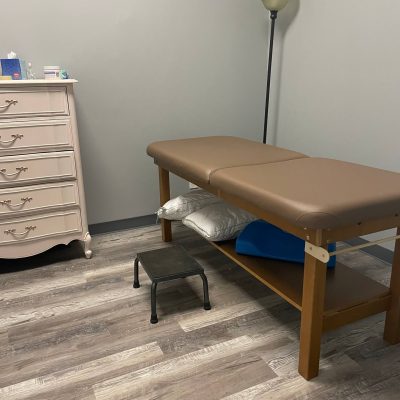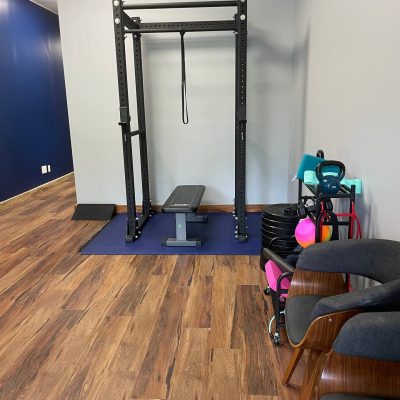The pelvic floor is the base of a collective group of muscles referred to as your ‘core’. The pelvic floor muscles are located in your pelvis and stretch like a hammock from the pubic bone (at the front) to the coccyx or tail-bone (at the back) and from side to side.
The pelvic floor muscles work with your deep abdominal (stomach) muscles, deep back muscles, hip muscles, and diaphragm to stabilize and support your spine. They also help control the pressure inside your abdomen to minimize the downward force when you lift or strain, such as during exercise
Since the pelvic floor has a lot of responsibilities in the body, that brings some confusion and misconceptions. Let’s try to clear up some of these misconceptions!
Running DOES Affect the Pelvic Floor
The high-impact nature of running adds increased stress to the pelvic floor muscles. Ground reaction force is the force your body absorbs every time your foot hits the ground.
Gravity pulls down and ground reaction force is coming up, and they meet at the midpoint in the pelvic area. Pelvic floor muscles are absorbing a ton of impact, and when you have these forces combining at once, leakage can occur when there is pelvic floor dysfunction. There are other aspects of the body that can assist in decreasing this impact, such as midfoot mobility, diaphragm excursion, and posture. A highly trained pelvic floor therapist can evaluate potential causes of urinary leakage while running; it is likely NOT just that your pelvic floor muscles are weak!
This is why medical professionals, pelvic floor therapists included, recommend women who have recently given birth ease back into running and other high impact activities. A pelvic floor therapist can help these postpartum women recover from childbirth, build back core strength, and safely return to a high impact exercise routine without negative side effects such as urinary or fecal leakage, prolapse, or pain.
Squats DO NOT only strengthen leg and buttocks muscles
Squats can promote a stronger pelvic floor and core when performed correctly. Pelvic Floor therapists coach clients to perform squats with ribs stacked over a neutral pelvis. They coach proper breathwork and footwork to optimally engage the pelvic floor and deep core. Oftentimes women present with a “mom butt”, or a flattened rear, due to weaknesss and inhibition of the glutes following pregnancy; this can cause the pelvic floor muscles to work in overdrive. Increasing glute strength can help to decrease pressure and tension placed on the pelvic floor.
Men DO Have a Pelvic Floor
Men can experience symptoms related to pelvic floor dysfunction: urinary and fecal incontinence, overactive bladder, painful intercourse, core weakness and diastasis recti, pelvic pain, and erectile dysfunction.
Symptoms of pelvic floor dysfunction often occur in men with prostate dysfunction. Those symptoms might be dribbling after urination, getting up more frequently at night to use the bathroom, and a slow stream of urination. Men may also struggle with erectile dysfunction or incontinence after a prostatectomy to treat prostate cancer.
Men who work in strenuous jobs or engage in heavy exercise may experience bladder and bowel dysfunction. Excessive straining can cause rectal prolapse in men, hernias, and abdominal muscle separation.
Pelvic floor therapists can treat men as well! Men do not have to live with these unwanted symptoms of pelvic floor dysfunction.
Everyone Should NOT Be Doing Kegel Exercises
The kegel exercise is an important tool in strengthening your pelvic floor, but only if it’s done correctly.
Quick squeezes of the pelvic-floor muscle can strengthen the fast-twitch muscle that prevents leaking while sneezing, coughing, laughing, and jumping. Longer endurance holds focus on recruiting slow-twitch muscle fibers that are required for prolonged activity as well as decreasing urinary frequency and urgency.
To properly do a kegel exercise that focuses on those slow-twitch muscles: Breathe normally as you tighten your pelvic floor muscles for 10 seconds, then relax them for 10 seconds. Perform three sets of 10 repetitions daily.
All muscles need to be able to contract and relax, even the pelvic floor. Most people we see in the clinic need to be relaxing their pelvic floor before they learn to contract it. If you are habitually doing kegels or strengthening your pelvic floor without lengthening or relaxing it, this can lead to pelvic floor dysfunction (urinary and fecal leakage, urinary urgency/ frequency, nocturia, pain, prolapse, sexual dysfunction).
Squeezing can make a tight pelvic floor problem worse. For these people, many of whom present with feelings of pain in the pelvic floor, kegel exercises are not an appropriate form of treatment. Pelvic floor therapy is about strength and tone, as well as being able to relax those muscles.
Urinary Leakage is NOT Normal
Pelvic floor therapists want everyone to understand that any amount of Bladder Leakage is common but NOT normal. Bladder leakage can be an embarrassing symptom and some people may not want to divulge this information to their medical provider. Bladder leakage will be easier to treat if it are addressed when symptoms are mild versus waiting till it gets worse.
Pregnancy, prostate disease, and aging may be risk factors for leaking, but leakage can be addressed through pelvic floor therapy. The key is acknowledging your problem and seeking treatment (ideally through conservative treatment in Pelvic Floor Therapy)!
Don’t be afraid to seek treatment if something is off or seems off with your pelvic floor muscles. You do not have to live with leakage, prolapse, or pain!
Interested in Pelvic Floor Therapy? We see men and women of all ages in the Birmingham, AL, region. Our clinic is located in Hoover, AL, near the Galleria. Contact us to schedule!







